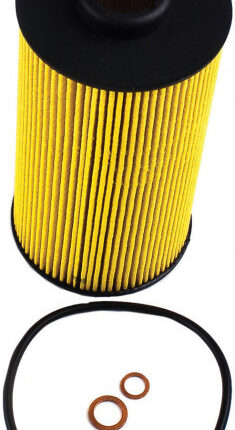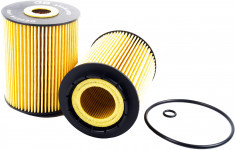-17%
Get Mercedes Benz B180 WDD247 Oil Filter Assy OE0107 in Kenya
The oil filter assembly is a crucial component in a vehicle’s lubrication system, ensuring that the engine oil remains clean and free from contaminants. Clean oil is essential for reducing friction, preventing wear, and enhancing engine performance. Without a properly functioning oil filter, dirt, metal particles, and sludge could circulate in the engine, leading to serious damage over time.
This guide explores the function, types, benefits, maintenance, and signs of a failing oil filter assembly, providing an in-depth understanding of its role in engine health.
What is an Oil Filter Assembly?
An oil filter assembly is a complete unit consisting of the oil filter, housing, seals, and sometimes additional components like bypass valves and pressure regulators. Its primary role is to filter out contaminants from the engine oil before it circulates through critical engine components.
Components of an Oil Filter Assembly
- Filter Media – The material inside the filter that traps dirt and debris.
- Anti-Drain Back Valve – Prevents oil from draining out when the engine is off.
- Bypass Valve – Allows oil to flow in case of a clogged filter.
- Seals & Gaskets – Ensure a tight fit to prevent leaks.
- Housing (Canister or Cartridge Holder) – Protects the filter and holds oil under pressure.
How the Oil Filter Assembly Works
The oil filter assembly functions as part of the engine lubrication system, working in the following steps:
- Oil Pickup – The oil pump draws oil from the sump (oil pan).
- Oil Filtration – Oil passes through the oil filter, where contaminants are removed.
- Oil Circulation – Clean oil flows through the engine’s bearings, camshaft, crankshaft, and pistons.
- Continuous Process – The oil keeps cycling, maintaining lubrication and cooling.
The anti-drain back valve ensures oil remains in the filter after engine shutdown, providing immediate lubrication at startup. The bypass valve allows oil to flow if the filter becomes clogged, preventing oil starvation.
Types of Oil Filter Assemblies
There are several types of oil filter assemblies, designed for different engine types and applications.
1. Spin-On Oil Filter Assembly
- A self-contained metal canister with a built-in filter element.
- Easy to replace as a single unit.
- Common in most passenger vehicles.
2. Cartridge Oil Filter Assembly
- A replaceable filter element housed within a separate canister.
- More environmentally friendly since only the filter media is changed.
- Found in modern vehicles and high-performance engines.
3. Magnetic Oil Filter Assembly
- Uses a magnet to trap metal particles.
- Ideal for high-performance and industrial applications.
4. High-Efficiency (HE) Oil Filter
- Designed to trap ultra-fine particles.
- Used in racing, off-road, and high-mileage engines.
5. Bypass Oil Filter Assembly
- Provides secondary filtration for improved oil cleanliness.
- Often used in heavy-duty trucks and industrial engines.
Benefits of a Well-Maintained Oil Filter Assembly
A properly functioning oil filter assembly offers several advantages:
1. Engine Protection
- Prevents dirt, metal shavings, and carbon deposits from circulating.
2. Extended Engine Life
- Reduces wear and tear on critical components.
3. Improved Lubrication
- Ensures consistent oil flow to prevent engine overheating.
4. Better Fuel Efficiency
- Clean oil reduces engine friction, improving fuel economy.
5. Prevents Sludge Buildup
- Stops contaminants from thickening the oil, which can clog passages.
6. Supports Turbocharged Engines
- Protects turbochargers by maintaining clean oil at high speeds.
Signs of a Failing Oil Filter Assembly
A clogged or failing oil filter can lead to serious engine damage. Here are some common warning signs:
1. Low Oil Pressure Warning Light
- A clogged oil filter restricts oil flow, triggering the oil pressure warning light.
2. Engine Noise & Knocking
- Insufficient lubrication causes metal-to-metal contact, leading to knocking or ticking sounds.
3. Dirty or Dark Oil
- Excess contaminants indicate the filter is not working efficiently.
4. Oil Leaks Around the Filter Housing
- Worn-out seals or gaskets may cause oil leakage.
5. Reduced Engine Performance
- Dirty oil increases friction, making the engine run sluggishly.
6. Black Smoke from the Exhaust
- Unfiltered contaminants burn in the combustion chamber, creating black smoke.
Oil Filter Assembly Maintenance Tips
Proper maintenance ensures your oil filter works efficiently.
1. Regular Oil & Filter Changes
- Change the oil filter every 5,000 – 10,000 km, depending on driving conditions.
2. Use High-Quality Filters
- Choose OEM (Original Equipment Manufacturer) or high-grade aftermarket filters.
3. Monitor Oil Levels
- Low oil levels can indicate a leak or excessive contamination.
4. Check for Leaks
- Inspect the filter housing and connections for oil leaks.
5. Avoid Cheap or Poor-Quality Filters
- Low-quality filters may have weak seals, poor filtration media, or short lifespans.
6. Use the Correct Oil Type
- Always use the manufacturer-recommended oil viscosity and grade.
How to Replace an Oil Filter Assembly
Replacing an oil filter assembly is a straightforward process but requires attention to detail.
Tools Needed:
- Oil filter wrench
- Drain pan
- New oil filter
- Engine oil
- Gloves & rags
Steps to Replace an Oil Filter Assembly:
- Warm Up the Engine – Run the engine for a few minutes to thin the oil.
- Drain the Old Oil – Place a drain pan under the engine and remove the oil plug.
- Remove the Old Filter – Use an oil filter wrench to unscrew the filter.
- Prepare the New Filter – Apply a small amount of new oil to the rubber seal.
- Install the New Filter – Screw it in place and hand-tighten it securely.
- Refill with Fresh Oil – Pour new oil into the engine.
- Check for Leaks – Start the engine and inspect for leaks around the filter housing.
- Dispose of Old Oil Properly – Take used oil to a recycling center.
Conclusion
The oil filter assembly is essential for keeping engine oil clean and protecting the engine from contaminants. Regular inspection and timely replacement of the oil filter can prevent costly engine repairs and extend engine life.
By understanding the function, maintenance, and warning signs of failure, you can keep your vehicle running smoothly, efficiently, and safely. 🚗💨
Follow us on Facebook for more parts.



